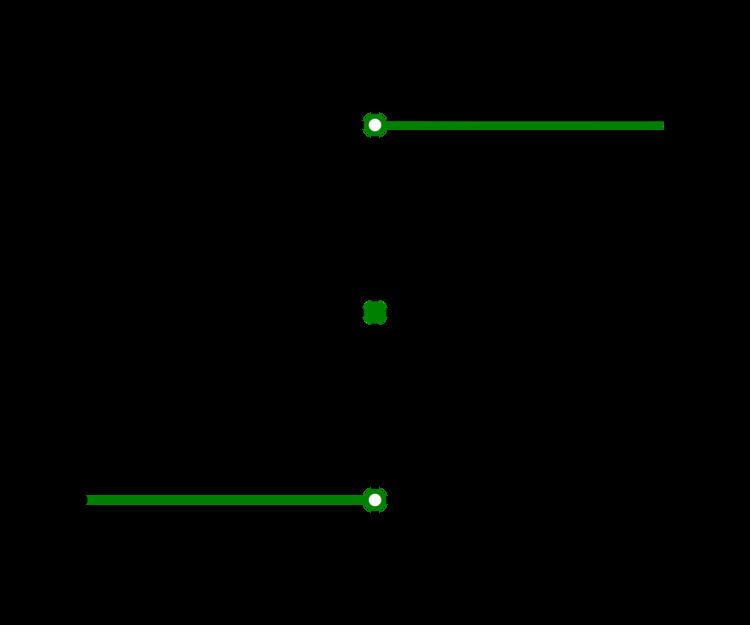 | ||
In mathematics and signal processing, an analytic signal is a complex-valued function that has no negative frequency components. The real and imaginary parts of an analytic signal are real-valued functions related to each other by the Hilbert transform.
Contents
- Definition
- Example 1
- Example 2
- Example 3
- Negative frequency components
- Envelope and instantaneous phase
- Complex envelopebaseband
- Extensions of the analytic signal to signals of multiple variables
- Multi dimensional analytic signal based on an ad hoc direction
- The monogenic signal
- References
The analytic representation of a real-valued function is an analytic signal, comprising the original function and its Hilbert transform. This representation facilitates many mathematical manipulations. The basic idea is that the negative frequency components of the Fourier transform (or spectrum) of a real-valued function are superfluous, due to the Hermitian symmetry of such a spectrum. These negative frequency components can be discarded with no loss of information, provided one is willing to deal with a complex-valued function instead. That makes certain attributes of the function more accessible and facilitates the derivation of modulation and demodulation techniques, such as single-sideband. As long as the manipulated function has no negative frequency components (that is, it is still analytic), the conversion from complex back to real is just a matter of discarding the imaginary part. The analytic representation is a generalization of the phasor concept: while the phasor is restricted to time-invariant amplitude, phase, and frequency, the analytic signal allows for time-variable parameters.
Definition
If
where
where:
contains only the non-negative frequency components of
The analytic signal of
where
Example 1
Then:
A corollary of Euler's formula is
Example 2
Here we use Euler's formula to identify and discard the negative frequency.
Then:
Example 3
This is another example of using the Hilbert transform method to remove negative frequency components. We note that nothing prevents us from computing
Then:
Negative frequency components
Since
Envelope and instantaneous phase
An analytic signal can also be expressed in terms of its time-variant magnitude and phase (polar coordinates):
where:
In the accompanying diagram, the blue curve depicts
The time derivative of the unwrapped instantaneous phase has units of radians/second, and is called the instantaneous angular frequency:
The instantaneous frequency (in hertz) is therefore:
The instantaneous amplitude, and the instantaneous phase and frequency are in some applications used to measure and detect local features of the signal. Another application of the analytic representation of a signal relates to demodulation of modulated signals. The polar coordinates conveniently separate the effects of amplitude modulation and phase (or frequency) modulation, and effectively demodulates certain kinds of signals.
Complex envelope/baseband
Analytic signals are often shifted in frequency (down-converted) toward 0 Hz, possibly creating [non-symmetrical] negative frequency components:
where
This function goes by various names, such as complex envelope and complex baseband. The complex envelope is not unique; it is determined by the choice of
In other cases,
If
Sometimes
Alternatively,
or another alternative (for some optimum
In the field of time-frequency signal processing, it was shown that the analytic signal was needed in the definition of the Wigner–Ville distribution so that the method can have the desirable properties needed for practical applications.
Sometimes the phrase "complex envelope" is given the simpler meaning of the complex amplitude of a (constant-frequency) phasor; other times the complex envelope
Extensions of the analytic signal to signals of multiple variables
The concept of analytic signal is well-defined for signals of a single variable which typically is time. For signals of two or more variables, an analytic signal can be defined in different ways, and two approaches are presented below.
Multi-dimensional analytic signal based on an ad hoc direction
A straightforward generalization of the analytic signal can be done for a multi-dimensional signal once it is established what is meant by negative frequencies for this case. This can be done by introducing a unit vector
The monogenic signal
The real and imaginary parts of the analytic signal correspond to the two elements of the vector-valued monogenic signal, as it is defined for one-variable signals. However, the monogenic signal can be extended to arbitrary number of variables in a straightforward manner, producing an (n + 1)-dimensional vector-valued function for the case of n-variable signals.
